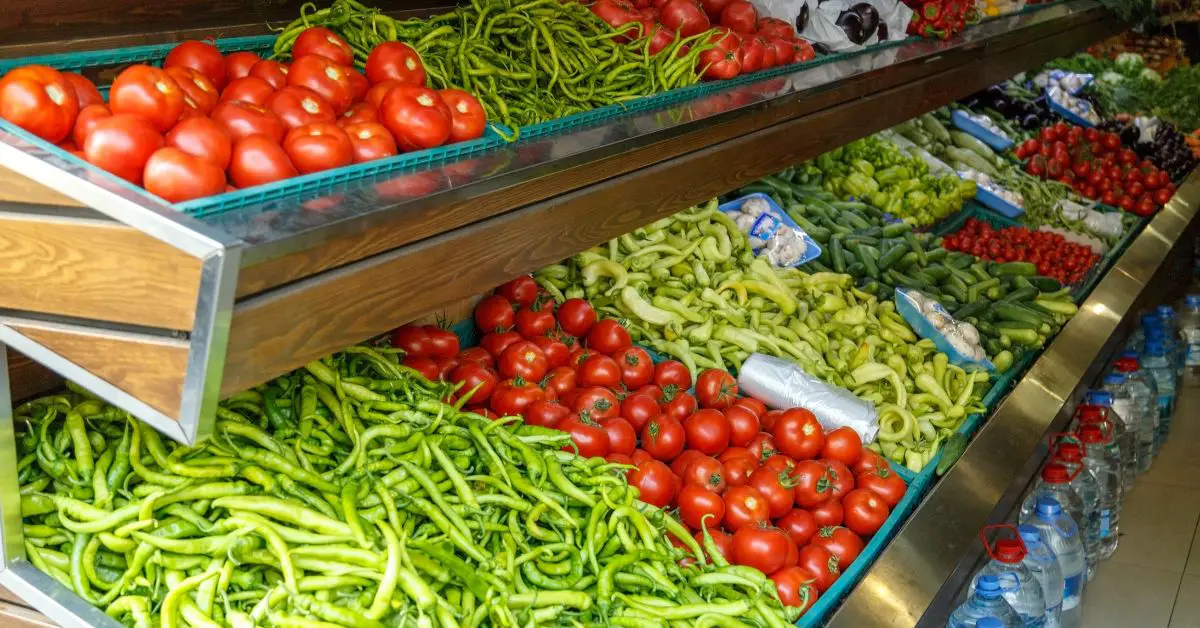74 Tips on How to Start Vegetable Business
Starting a vegetable business in India can be a viable and fulfilling experience if you are interested in agriculture and entrepreneurship. With a growing demand for fresh and locally-sourced produce, the vegetable industry presents numerous opportunities for success. However, starting a business in any industry can be daunting, especially if you are new to the field.
This blog will guide you through the 74 tips on how start a vegetable business in India, including identifying your target audience, sourcing suppliers, and creating a business plan. By following these tips, you can get your vegetable business up and running in no time. Whether you are looking to start a small in-house garden farm or a large vegetable export business, this blog has everything you need to know to get started.

- Research the market: Research the local market to understand the demand for different types of vegetables and identify potential customers.
- Develop a business plan: Outline your business goals, target market, competition, financial projections, and strategies for growth.
- Obtain the necessary licenses and permits: Check with your local government to determine what licenses and permits are required for your specific vegetable business.
- Find a suitable location: Look for a location that is easily accessible, has suitable soil and weather conditions for growing vegetables and has a high foot traffic.
- Secure funding: Consider different options, such as a small business loan, crowdfunding or investors.
- Develop a farm plan: Develop a farm plan that outlines the types of vegetables you will grow, the layout of your farm, and the equipment you will need.
- Create a marketing plan: Create a marketing plan to promote your business, such as social media, flyers, or online ads.
- Build a website: Build a website that provides information about your business, products, and services.
- Hire staff: Hire a team of experienced staff members, including farm hands, managers and sales staff.
- Create a sales plan: Develop a sales plan to reach customers, such as farmers markets, grocery stores, restaurants, and online sales.
- Create a pricing strategy: Develop a pricing strategy that takes into account production costs, competition and customer demand.
- Learn about crop rotation: Learn about crop rotation to maintain soil fertility and prevent the spread of pests and diseases.
- Learn about irrigation: Learn about irrigation to ensure that your crops receive the right amount of water.
- Learn about fertilization: Learn about fertilization to ensure that your crops receive the right nutrients.
- Learn about pest control: Learn about pest control to protect your crops from pests and diseases.
- Learn about harvest and storage: Learn about harvest and storage to ensure that your vegetables are harvested and stored at the right time and in the right conditions.
- Implement sustainable farming practices: Implement sustainable farming practices, such as crop rotation, composting, and integrated pest management, to minimize the environmental impact of your business.
- Create a social media presence: Create a social media presence by setting up accounts on Facebook, Instagram, Twitter, and other platforms.
- Participate in local events: Participate in local events, such as farmers markets and agricultural fairs, to promote your business and connect with customers.
- Continuously improve: Keep a close eye on your business’s performance, listen to customer feedback and make necessary improvements.
- Create a brand: Create a unique brand identity that reflects your business’s mission and values, and use it consistently across all marketing materials.
- Develop a product line: Develop a product line of different types of vegetables, such as heirloom, organic, or specialty varieties, to stand out from the competition.
- Use a subscription service: Use a subscription service to deliver fresh vegetables to customers on a regular basis.
- Use a food delivery service: Use a food delivery service to reach more customers and expand your reach.
- Create a vegetable box delivery service: Create a vegetable box delivery service to deliver a curated selection of vegetables to customers.
- Create a farm-to-table service: Create a farm-to-table service to connect customers directly with farmers and provide them with fresh, locally-sourced produce.
- Create a CSA program: Create a CSA (Community Supported Agriculture) program to allow customers to buy shares of your farm’s harvest in advance.
- Offer tours: Offer tours of your farm to educate customers about your farming practices and allow them to see where their food comes from.
Make use of digital marketing

- Create a blog: Create a blog to share information about your farm, such as recipes, farming tips, and information about your products.
- Use social media: Use social media to share information about your farm, such as recipes, farming tips, and information about your products.
- Use email marketing: Use email marketing to reach potential customers and keep them informed about new products, sales, and events.
- Use paid advertising: Use paid advertising, such as Google AdWords, to drive traffic to your website and generate leads.
- Create a mobile app: Create a mobile app to allow customers to place orders, track delivery and pay for their products.
- Use food bloggers and influencers: Use food bloggers and influencers to create buzz and promote your business.
- Offer a loyalty program: Offer a loyalty program to reward customers who frequently buy your products.
- Create a vegetable guide: Create a vegetable guide to educate customers about the different types of vegetables you offer, how to store them, and how to prepare them.
- Create a cooking class: Create a cooking class to teach customers how to prepare your vegetables in different ways.
- Create a recipe book: Create a recipe book to share recipes that feature your vegetables.
- Use data analytics: Use data analytics to track your business’s performance, including the number of sales, revenue generated, and customer demographics.
- Use customer feedback: Use customer feedback to improve your products, service, and overall
- Create a wholesale division: Create a wholesale division to sell your produce to restaurants, grocery stores and other food retailers.
- Invest in packaging and branding: Invest in packaging and branding to make your products stand out on the shelf and increase customer appeal.
- Create a mobile farm stand: Create a mobile farm stand to sell your products at different locations, such as farmers markets or street corners.
- Offer pick-your-own options: Offer pick-your-own options, such as u-pick berries, to attract customers and provide a unique experience.
- Create a membership program: Create a membership program to offer exclusive deals and discounts to customers who sign up.
- Create a referral program: Create a referral program to reward customers who refer friends and family to your business.
- Use SEO: Use search engine optimization (SEO) to improve your website’s visibility and drive more traffic to your site.
- Use Google Analytics: Use Google Analytics to track and analyze your website’s traffic and customer behavior.
- Create a customer loyalty program: Create a customer loyalty program to reward customers for repeat purchases.
- Create a customer feedback system: Create a customer feedback system to gather feedback from customers and use it to improve your products and services.
- Use a CRM: Use a customer relationship management (CRM) system to keep track of leads and customers, and to automate follow-up tasks.
- Create a newsletter: Create a newsletter to keep customers informed about new products, sales, and events.
- Partner with other businesses: Partner with other businesses, such as restaurants, grocery stores, and food co-ops, to expand your reach and offer added value to customers.
- Use video marketing: Use video marketing to showcase your farm, products and growing practices.
- Use Influencer marketing: Use Influencer marketing to connect with a wider audience and drive more traffic to your website.
- Develop a mobile-friendly website: Develop a mobile-friendly website to make it easy for customers to access your site from any device.
- Use remarketing: Use remarketing to target customers who have visited your site before and encourage them to make a purchase.
- Optimize your website for conversions: Optimize your website for conversions by making it easy for customers to find what they’re looking for and make a purchase.
- Create a blog: Create a blog to share information about your farm and your products and to provide valuable information to your customers.
- Use Instagram Stories: Use Instagram Stories to connect with customers and share information about your farm and products.
- Use Instagram Live: Use Instagram Live to connect with customers in real-time, answer questions and provide information about your farm and products.
- Use Instagram Reels: Use Instagram Reels to create short, engaging videos to showcase your farm and products.
- Offer discounts and promotions: Offer discounts and promotions to attract new customers and retain existing ones.
- Use Twitter: Use Twitter to share information about your farm and products, and to connect with customers and other industry professionals.
- Use Pinterest: Use Pinterest to share information about your farm and products, and to connect with customers and other industry professionals.
- Use YouTube: Use YouTube to create videos that showcase your farm and products, and to provide valuable information to customers.
- Use TikTok: Use TikTok to connect with customers and share information about your farm and products in a fun and engaging way.
- Create a loyalty program: Create a loyalty program to reward customers for repeat purchases and to encourage customer retention.
- Use customer testimonials: Use customer testimonials to build trust and credibility with potential customers.
- Use a chatbot: Use a chatbot to provide customer support and answer common questions 24/7.
- Use a customer survey: Use a customer survey to gather feedback from customers and use it to improve your products and services.
- Use affiliate marketing: Use affiliate marketing to reach a wider audience and drive more sales.
- Use Google My Business: Use Google My Business to improve your local SEO and make it easier for customers to find your farm.
- Use a content marketing strategy: Use a content marketing strategy to attract and engage customers with valuable content that aligns with their interests and needs.


